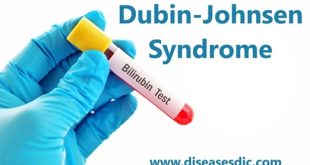Definition
Duodenal atresia refers to a malformation of the duodenum, the upper portion of the small intestine, which is usually present at birth. This results in a blockage that prevents any food or fluid from leaving the stomach, also known as a complete bowel obstruction or intestinal obstruction. This is in contrast with duodenal stenosis, which is a narrowing of the duodenum that leads to an incomplete bowel obstruction, as small amounts of stomach contents can still pass through the stomach and the duodenum.
The small intestine, also called the small bowel, consists of the duodenum, jejunum, and ileum. A long, hollow tube, the small intestine connects the stomach to the large intestine. In some cases of duodenal atresia, the defect in the duodenum occurs close to the ampulla of Vater, which connects the pancreatic and bile ducts to the small intestine. In other cases, the defect may occur in a different area of the duodenum.
Epidemiology
Reported incidence rates for duodenal atresia range from 1 in 5,000 to 10,000 live births; rates published in the United States and internationally do not appear to differ. Duodenal atresia is not usually regarded as a familial condition, despite isolated reports of this condition in multiple siblings.
Types of Duodenal atresia
Duodenal atresia can be partial or complete.
In a partial atresia, the area is narrowed so much that nothing can pass through.
In a complete atresia, there is a section missing from the duodenum, which creates a gap between the stomach and intestines where they should be joined. In either case, the blocked part of the duodenum is called the atretic area.
Risk factors
The most potent risk factor in the development of duodenal atresia is down syndrome.
Other risk factors include annular pancreas, and VACTERL anomalies.
VACTERL
- Vertebral defects
- Anal anomalies
- Cardiac anomalies
- Tracheoesophageal atresia
- Renal abnormalities
- Limb abnormalities
Annular pancreas
- Biliary tract abnormalities
- Mandibulofacial anomalies
Causes of Duodenal atresia
- Vascular anomalies, abnormalities in neural cell migration and failure of recanalization of the duodenal lumen may play a causative role, although the exact cause remains unknown
- In most cases, Duodenal Atresia is sporadic, although an autosomal recessive pattern has been suggested in some families
Autosomal recessive: Autosomal recessive conditions are traits or disorders that occur when two copies of an abnormal gene have been inherited on a non-sex chromosome. If both parents have an autosomal recessive condition, there is a 100% likelihood of passing on the mutated genes to their children. If, however, only one mutant copy of the gene is inherited, the individual will be a carrier of the condition, but will not be present with any symptoms. Children born to two carriers, have a 25% chance of being homozygous dominant (unaffected), a 50% chance of being heterozygous (carrier), and a 25% chance of being homozygous recessive (affected).
Duodenal atresia symptoms
In the first few hours after birth, most babies with duodenal atresia experience vomiting. The vomit may be yellow, green or light brown. A baby may vomit after the first feeding. Vomiting worsens if left untreated. In these cases, it is important to distinguish duodenal atresia from malrotation.
Babies may also experience:
- Low birth weight
- Premature birth
- Swelling in the upper abdomen (belly)
Patients with partial blockages of the duodenum may still present with vomiting in infancy if the blockage is bad enough. Less severe, partial blockages may also present later in childhood. Late presenting symptoms are more varied and include:
- Regurgitation
- Indigestion
- Pain
- Malabsorption
- Abdominal mass
Complications of duodenal atresia
These complications may occur:
- Other birth defects
- Dehydration
After surgery, there may be complications such as:
- Swelling of the first part of the small bowel
- Problems with movement through the intestines
- Gastroesophageal reflux
Diagnosis and test
Duodenal atresia may be found during routine prenatal ultrasound but sometimes it is diagnosed after the baby is born. If your baby has duodenal atresia, the ultrasound may show fluid in your baby’s stomach and part of the duodenum, but no fluid beyond that. This is called the double-bubble sign. The prenatal ultrasound may also show too much amniotic fluid in your womb. This condition is called polyhydramnios.
If your doctor thinks there is a problem, more tests may be ordered. These may include:
Fetal echocardiogram: A special ultrasound used by a pediatric heart doctor(cardiologist) to look closely at your baby’s heart and surrounding blood vessels.
Fetal MRI (magnetic resonance imaging): A non-invasive imaging test to get a clear, more detailed image of your baby’s organs. It may help find other problems your baby may have.
Other Tests
Some congenital conditions are caused by changes in DNA, or a baby’s genetic make-up. The doctors may suggest genetic testing to find out more about your baby’s DNA.
Cell-Free Fetal DNA testing: A screening test where a sample of your blood is taken to look for copies of fetal (baby) DNA. A positive result means that there could be problems with the baby’s DNA. It should be confirmed with another test. A normal result does not mean that there are no underlying genetic problems. Other testing can be done before or after birth depending on your needs and the needs of the baby. This test can see if your baby has Down Syndrome.
Amniocentesis: A medical procedure in which a small amount of amniotic fluid is taken and studied to screen for genetic problems. This test is usually done in the middle of the second trimester. An amniocentesis can be used to confirm findings on the cell-free fetal DNA test. This test can diagnose Down Syndrome.
Testing the baby: After birth, a test is done with a sample of your baby’s blood to look for chromosome problems. This is called either a “karyotype” (basic chromosome study), or microarray ((a more detailed look at smaller sections of DNA).
Treatment and medications
Duodenal atresia treatment before birth
Duodenal atresia can only be treated after an infant is born, but there are some prenatal interventions that can reduce the risk of complications at birth.
Close observation is needed so the fetus and mother can be monitored for urgent problems. This includes sequential measurements of the uterus and evaluation of internal uterine pressure. Sometimes an amnioreduction procedure is done to remove some of the amniotic fluid during pregnancy.
Duodenal atresia treatment after birth
Babies diagnosed with duodenal atresia can be delivered normally, without the necessity of a surgical C-section procedure. The overall goal is for the mother to have a vaginal delivery as close as possible to the baby’s due date. Although the delivery may be normal, specialized medical interventions will be needed after the baby is born and the infant will be taken to the newborn intensive care unit after birth.
An infant with duodenal atresia has to be fed with intravenous nutrients and fluids. In addition, a very thin flexible tube called a nasogastric (NG) tube will be inserted into the infant’s stomach via the nose or mouth. This will remove air since trapped air and gases will not be able to move through the digestive tract normally. The tube will also allow the delivery of fluids to help prevent dehydration as well as provide nutrition.
An infant diagnosed with duodenal atresia will not be able to take milk from a bottle or breastfeed until surgery is done to correct the obstruction.
Surgical Treatment
Under most circumstances, the surgical procedure is done around day two or three after birth. Although there are several different types of malformations of the duodenum that are considered subtypes of duodenal atresia, the procedure is similar for each subtype. The steps in the procedure include:
- Administration of general anesthesia
- Opening the blocked end of the duodenum
- Connecting the remainder of the small intestine to the end that was blocked
After Surgery
After the procedure, the baby will be returned to the neonatal intensive care unit; it may be necessary for the newborn to be put on a ventilator (a machine that helps the baby breathe) for a few days.
Under normal circumstances, the baby will be in the hospital approximately three weeks after having surgery for duodenal atresia. After the surgical site heals, the baby can begin taking a bottle or breastfeeding right away. Once the baby is taking food by mouth, without any complications, the baby can go home with the parents.
Prevention of duodenal atresia
Currently, there are no known effective measures to prevent the formation of Duodenal Atresia.
If there is a family history of the condition, then genetic counseling will help assess risks, before planning for a child
In order to prevent complications, close monitoring of the developing fetus may be recommended by the healthcare provider
 Diseases Treatments Dictionary This is complete solution to read all diseases treatments Which covers Prevention, Causes, Symptoms, Medical Terms, Drugs, Prescription, Natural Remedies with cures and Treatments. Most of the common diseases were listed in names, split with categories.
Diseases Treatments Dictionary This is complete solution to read all diseases treatments Which covers Prevention, Causes, Symptoms, Medical Terms, Drugs, Prescription, Natural Remedies with cures and Treatments. Most of the common diseases were listed in names, split with categories.







